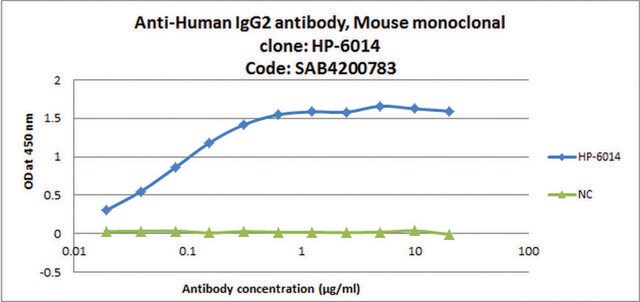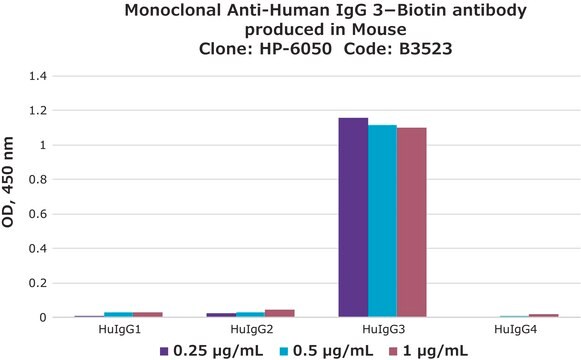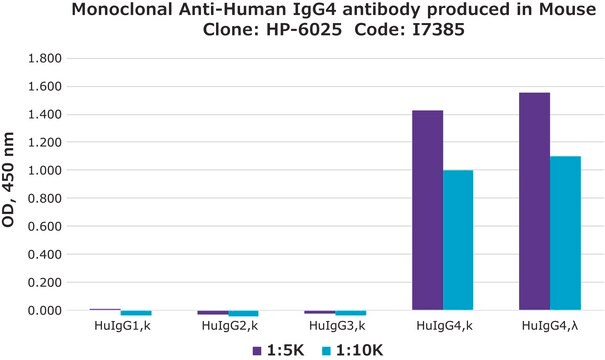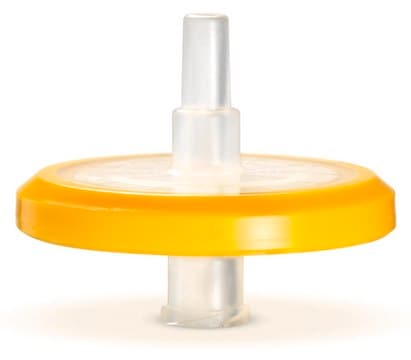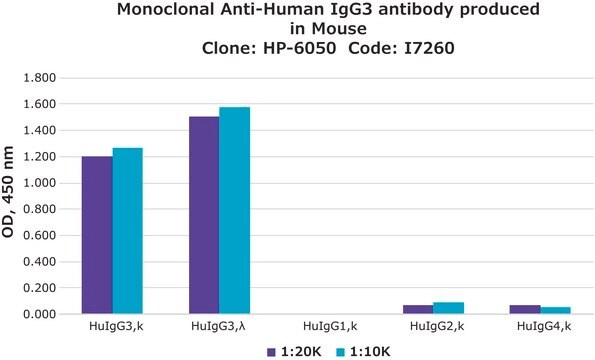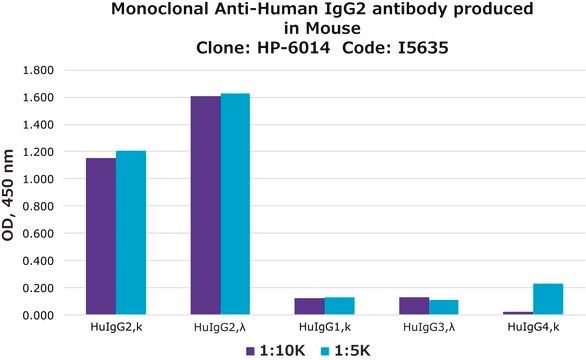B3398
Anti-Human IgG2−Biotin antibody, Mouse monoclonal
clone HP-6014, purified from hybridoma cell culture
Synonym(s):
Monoclonal Anti-Human IgG2
Sign Into View Organizational & Contract Pricing
All Photos(1)
About This Item
UNSPSC Code:
12352203
NACRES:
NA.46
Recommended Products
biological source
mouse
Quality Level
conjugate
biotin conjugate
antibody form
purified from hybridoma cell culture
antibody product type
secondary antibodies
clone
HP-6014, monoclonal
form
buffered aqueous solution
species reactivity
human
technique(s)
direct ELISA: 1:30,000
isotype
IgG1
shipped in
dry ice
storage temp.
−20°C
target post-translational modification
unmodified
Looking for similar products? Visit Product Comparison Guide
Related Categories
General description
Monoclonal Anti-Human IgG2 (mouse IgG1 isotype) is derived from the hybridoma (HP-60141 ) produced by the fusion of mouse myeloma cells and splenocytes from an immunized mouse. IgG is the most abundant serum immunoglobulins of the immune system. IgG2 is a subtype of IgG. IgG is secreted by B cells and is found in blood and extracellular fluids.
Specificity
The antibody is specific for human IgG2 and is non-reactive with other IgG subclasses. This clone has been singled out as the most widely applicable IgG2 specific monoclonal antibody by the IUIS/WHO study.
Application
Monoclonal Anti-Human IgG2−Biotin antibody produced in mouse has been used in indirect enzyme linked immunosorbent assay (ELISA) and immunoblot.
Biochem/physiol Actions
IgG provides protection from infections caused by bacteria, fungi and viruses. Maternal IgG is transferred to fetus through the placenta that is vital for immune defense of the neonate against infections.
Low IgG2 levels were found in patients with systemic lupus erythematosus (SLE) and juvenile diabetes melitus.
Physical form
Solution in 0.01 M phosphate buffered saline pH 7.4, containing 1% bovine serum albumin and 15 mM sodium azide
Disclaimer
Unless otherwise stated in our catalog or other company documentation accompanying the product(s), our products are intended for research use only and are not to be used for any other purpose, which includes but is not limited to, unauthorized commercial uses, in vitro diagnostic uses, ex vivo or in vivo therapeutic uses or any type of consumption or application to humans or animals.
Not finding the right product?
Try our Product Selector Tool.
Storage Class Code
10 - Combustible liquids
WGK
nwg
Flash Point(F)
Not applicable
Flash Point(C)
Not applicable
Choose from one of the most recent versions:
Already Own This Product?
Find documentation for the products that you have recently purchased in the Document Library.
Customers Also Viewed
Placental transfer of IgG subclasses in a Japanese population
Hashira S, et al.
Pediatrics International, 42, 337-342 (2000)
Alberts B, et al.
Molecular biology of the Cell. 4th Edition., 42, 337-342 (2002)
Immunoglobulin subclass deficiency
Hanson L A, et al.
The Pediatric Infectious Disease Journal, 7, 7-21 (1988)
Elana R Shaw et al.
Current protocols, 2(8), e511-e511 (2022-08-18)
Autoantibodies (autoAbs) that neutralize type 1 interferons (T1IFNs) are a major risk factor associated with developing critical COVID-19 disease and are most commonly found in individuals over age 70 and in patients with genetic or acquired thymic defects. Swift identification
Marianna Spatola et al.
Neurology, 95(22), e3012-e3025 (2020-09-16)
To clinically characterize patients with anti-metabotropic glutamate receptor (mGluR) 1 encephalitis, to identify prognostic factors, and to study the immunoglobulin G (IgG) subclasses and effects of antibodies on neuronal mGluR1 clusters. Clinical information on new and previously reported patients was
Our team of scientists has experience in all areas of research including Life Science, Material Science, Chemical Synthesis, Chromatography, Analytical and many others.
Contact Technical Service